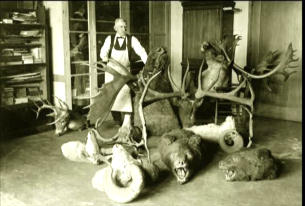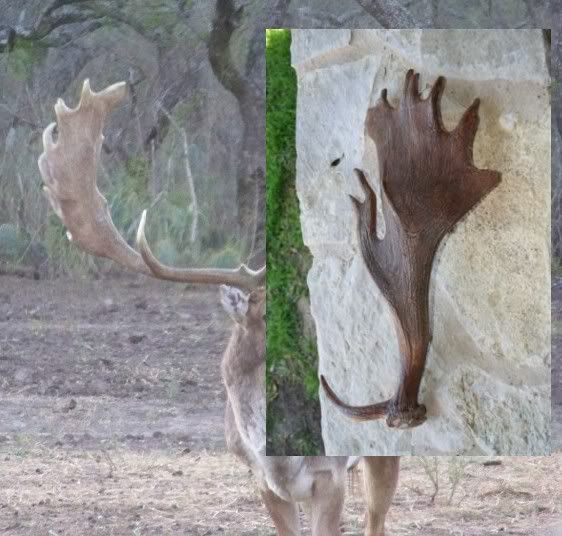

 The Accurate Reloading Forums
The Accurate Reloading Forums  THE ACCURATE RELOADING.COM FORUMS
THE ACCURATE RELOADING.COM FORUMS  Hunting
Hunting  Taxidermy
Taxidermy  1st Try
1st TryGo  | New  | Find  | Notify  | Tools  | Reply  |  |
| one of us |
I am pleased, but I can see room for improvement in the paint, specifically the tips. This was a practice antler and the resin coloring came out purple. no joke ... it was purple. So, I had to repaint the entire antler. The photos really bring out inconsistancies in color, so, in "real life" it does not look this blotchy and uneven. The camera is cruel. Even so, I consider it a success, especially since it was the first antler I have reproduced. I have no problem with anyone criticizing it, or any suggestions on paints.      | ||
|
| One of Us |
The antler itself is very nice but IMO the color is to dark. Here is a photo for reference.  | |||
|
| one of us |
The photo looks darker than it really is, so some of that is the picture, but, you are right, even in "real time" it is a shade too dark. I hadn't really noticed that until I dug through my shed pile and made comparisons with others. In my mind they were darker. | |||
|
| One of Us |
Dern fine first try, I'd say. | |||
|
| one of us |
You are right J P. Too dark and too red. Looks like I need more yellows, (some grey?) less red and is there a touch of green in there?  | |||
|
| One of Us |
I don't know how you are coloring it, but I'd say start out by using lighter colors first. Wipe it on and off fast, to prevent over coloring. Best of luck with it. | |||
|
| One of Us |
I've noticed a few things that affect the color of antlers in the wild. When the velvet first coms off the antlers, they are white or sometimes red from the blood in the velvet. When the animal rubs his antlers on bushes and trees, the antlers pick up color from what they are rubbing on. Stickey sap from conifers acts like glue and will hold more color on the antlers. This is very obvious in conifer forests that have burned. Antlers from these areas can be almost black. Elk antlers will typically have white tips from the bull digging his antlers in the ground, which removes the sap and the color it held on the antler. Deer don't dig their antlers in the ground as much as elk, so they don't develop the white tips like the elk. Antlers are usually darker early in the fall because the animals are rubbing more. Later in the fall and into the winter, the animals are not rubbing as much so they don't pick up the color from the bark, and the antlers are starting to fade from rain, snow, and sunlight. I guess what I am saying is the color of antlers will vary depending on the geographic lcation, time of year, and what the animal is rubbing on. There is no exact right or wrong color of antlers. NRA Endowment Life Member Life Member Wild Sheep Foundation | |||
|
| one of us |
Pretty good job, Wendell! If I had known you had such talent I would have hired you years ago when I had my taxidermy shop!! Have you tried 0000 steel wool as a last buffing? That knocks some of the paint layers off the high spots to give a natural look. Don't press too hard with it though. Hey . . . do you have any antlers for sale? I'd buy a truckload if I could. JDS And so if you meet a hunter who has been to Africa, and he tells you what he has seen and done, watch his eyes as he talks. For they will not see you. They will see sunrises and sunsets such as you cannot imagine, and a land and a way of life that is fast vanishing. And always he will will tell you how he plans to go back. (author: David Petzer) | |||
|
| one of us |
I like your answer. It fits my paint scheme. I was going for early fall antlers, that's right, now I remember. | |||
|
| one of us |
Will try that. If I rub too hard it will show the purple antler underneath. I do not have any antlers for sale. I do have a ton of sheds, but I can't bring myself to part with them. Want some reproductions? | |||
|
| One of Us |
Good answer Try the steel wool lightly in the center and a little heavier on the edges and tips. | |||
|
| Powered by Social Strata |
| Please Wait. Your request is being processed... |
|

Visit our on-line store for AR Memorabilia

